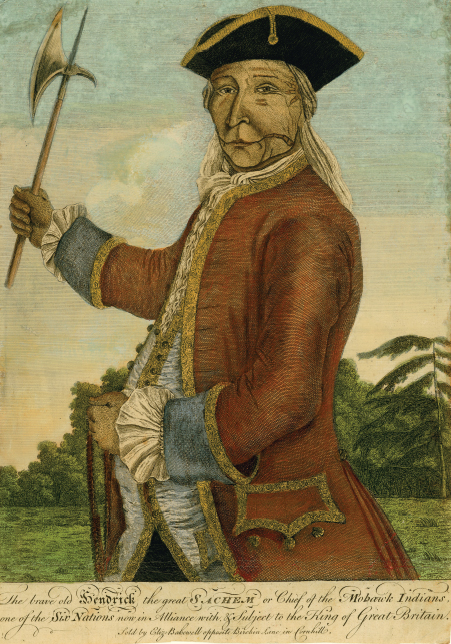America’s History: Printed Page 78
America: A Concise History: Printed Page 65
America’s History: Value Edition: Printed Page 63
Contact and Conflict
 Courtesy of the John Carter Brown Library at Brown University.
Courtesy of the John Carter Brown Library at Brown University.
Alongside the diversification of colonial populations and the rise of the British Atlantic, the eighteenth century was shaped by contact and conflict: between colonies and their Native American neighbors, and also among rival European empires. In Europe, the period after 1689 has sometimes been called the Second Hundred Years’ War, when Britain, France, and their European allies went to war against each other repeatedly. As these conflicts came to the North American theater, they decisively influenced Indian relations. Native American populations shrank dramatically or disappeared altogether during the seventeenth century, devastated by the effects of the Columbian Exchange (Chapter 2). The rise of imperial warfare encouraged the process of “tribalization,” whereby Indians regrouped into political structures — called “tribes” by Europeans — that could deal more effectively with their colonial neighbors and strike alliances in times of war. Europeans, in turn, employed Indian allies as proxy warriors in their conflicts over North American territory.
This pattern culminated in the Great War for Empire, which began in the North American backcountry, engaged thousands of provincial soldiers and Native American warriors, and reshaped the map of North America. The Treaty of Paris of 1763 gave Britain control of the entire continent east of the Mississippi. Events would soon show what a mixed blessing that outcome would turn out to be.